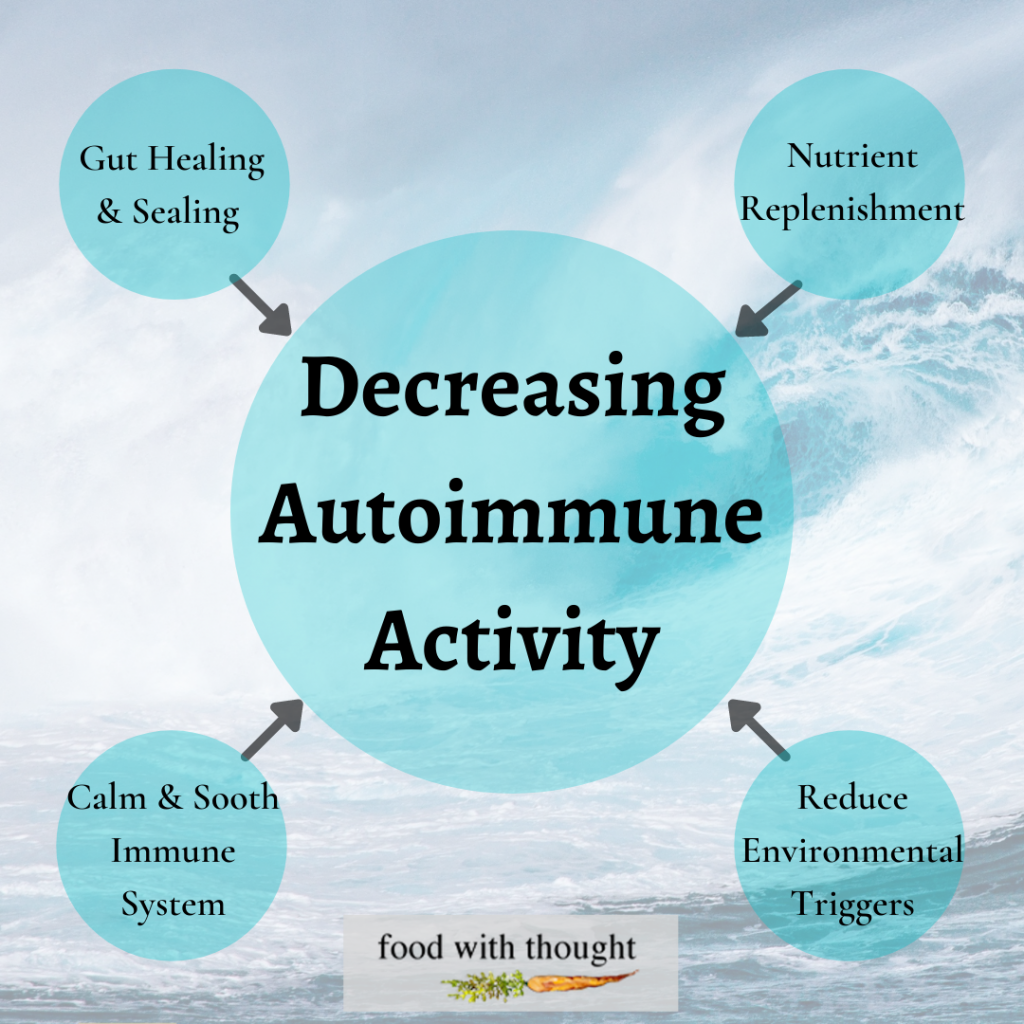Hope and Change for Autoimmune Dysregulation
May is Autoimmune Disease Awareness Month.
Did you know that autoimmune disease is the 3rd leading cause of death? Over 50 million Americans, children and adults, suffer with at least one of more than 80 possible autoimmune diseases.
In autoimmune disease, the body produces very specific antibodies. You might be familiar with antibodies as pertains to how the body deals with invading viruses or bacteria, or even reactive foods. However, in this case, the body produces antibodies against self (“auto”). The result is targeted tissue destruction, the location of which will depend on the type of antibodies that are being produced. Some of the most common types include Hashimoto’s thyroiditis, Crohn’s Disease and ulcerative colitis, type 1 diabetes, rheumatoid arthritis, multiple sclerosis, celiac disease, and psoriasis. These disorders can cause a range of debilitating symptoms depending on the disorder, which can include fatigue, skin issues, recurring fever, digestive issues, and pain or swelling in various parts of the body, brain fog, and general malaise.

We can look at this as simple but destructive confusion, or “molecular mimicry” – the body may want to attack Proteus bacteria, or gluten, or Epstein-Barr virus, but instead attacks joints, the small intestinal lining, or the thyroid. Oops. A very major oops.
So why this confusion? Our bodies aren’t stupid. They’re reacting this way for a reason, and we need to dig deeper in order to figure out WHY.
Spoiler alert: As with everything in functional medicine, we are looking to figure out the unique factors that came together for a unique person, that leaves the body expressing itself by producing antibodies that are attacking necessary tissues. When looking at autoimmune disease from a functional perspective, we see a culmination of several root-cause factors:
- Imbalanced immune system
- Leaky gut
- Genetic predisposition
- Environmental triggers

Let’s break these down further:
- Imbalanced immune system: Either over- or under-reactive. An overactive immune system can present as environmental and/or food allergies or sensitivities, asthma, and activated autoimmune patterns. An under reactive immune system can result in chronic simmering infections that the body is having a hard time resolving, like Lyme, or dental infections, or infections in the gut. You might see an underachieve immune system with Epstein Barr reactivation, herpes flares, shingles, and frequent illnesses that are hard to overcome. Sometimes this happens from low cortisol and high stress.
- Leaky gut, aka Intestinal Permeability, used to be considered “woo” and is now a mainstream concept. Imagine a garden hose. Closed tube. Now imagine it springs a ton of leaks, and water starts dumping everywhere. Now imagine sand, dirt, snail shells, and pebbles are sent through the hose, and the holes become big enough to allow the debris to seep through – this is the unexpected. Imagine your shock or concern at this no longer being pure water. Do you freak out? Try to figure out where all this debris has come from in the first place?
Of course this is a metaphor for poorly digested food flowing through the gastrointestinal system. Partially digested food can escape through leaks in the lining and becomes flagged by the immune system, creating food sensitivities and allergies. The garden hose needs to be repaired to calm the immune system down. This makes sense, as about 65% of the immune system is housed in the gut, and so often when there are gut issues, the immune system becomes alerted to them.

- Genetics: Autoimmune disorders often run in families, and we can find genes that connect to the condition. This autoimmune predisposition may not be expressed the same way in every family member, however: Mom may have ulcerative colitis, while uncle has rheumatoid arthritis and grandma has Hashimoto’s thyroiditis. Though sometimes everyone in the family suffers the same condition. Which brings us to …
- Environmental triggers: the match that ignites the fire. Autoimmune diseases don’t just happen – they are brought on by a constellation of factors building over years, and when the lit match gets thrown on smoldering wood, it ignites and symptoms occur. There are many types of environmental triggers that can establish the onset of autoimmune dynamics:
-STRESS
-Acute viral or bacterial infection
-Heavy metal toxicity
-Vaccines
-Shock or trauma
-Toxic environmental exposure from contaminated water, soil, food

The good news is that, while active autoimmune flares can be debilitating, there is a possibly for them to lose their steam! This can happen by rebalancing the immune system to encourage it to calm down. This may look different for various types of autoimmune conditions, but in general, the following needs to happen:
- Immune rebalancing by ensuring good oral health and removing chronic simmering infections, reactive foods (see the post on types of food reactions here), decreasing dietary sugar and exposure to artificial colors and flavors, and …
- Healing and sealing the gut. Since the origin of immune imbalance is at least in part due to dysfunction in the gut, then in order to help quell an immune response, the holes in the gut need to be plugged. Literally. This can involve functional stool testing to determine any digestive issues, imbalances within the microbiome (the community of bacteria, viruses, and – yikes! – parasites that may be residing within the gastrointestinal tract), inflammation being caused by the microbiome, their toxic byproducts, or foods, and overall immune function. Is the immune system in the gut having an overly robust response to what’s going on? Or has it gotten so fatigued from years of chronic fighting that its put up a white flag and needs some serious rescuing?
- Restoring nutrients by determining any deficiencies and doing something about it. Often when the gut is struggling, our absorption, or how well we bring nutrients on board, is also struggling. We can eat a beautiful, health-promoting organic kale salad massaged with olive oil and pink salt studded with pomegranate seeds, almonds, organic chopped chicken. But if we can’t actually break it down and pull in the magnesium, calcium, protein, then we have some missed opportunities. The absorption issues may be from inflammation in the gut that will quiet down after the microbiome is addressed, or from excessive stress, or from poor chewing. Or because a person may have a higher demand of a specific nutrient than someone else. It all depends, but it’s important to resolve.
- Removing environmental triggers. This is a huge one, that involves cleaning up the diet, cleaning up the environment. Think water, air quality, unnecessary medication exposure. Improving day-to-day detoxification, drinking enough water, and clearing heavy metals and chemicals. Exercising and sweating. Clearing up chronic simmering infections and restoring oral health.

It can be complicated for someone to ease their body into a new state of calm and decreased reactivity. But it’s certainly not impossible! There is definitely hope.
At Food With Thought, we don’t heal or cure autoimmune disease. But we do provide support to help you feel empowered, to identify and address the root causes of what can lead to an imbalanced immune system and antibody production, and do something about it.
References
https://www.hopkinsmedicine.org/health/wellness-and-prevention/what-are-common-symptoms-of-autoimmune-disease
https://www.womenshealth.gov/a-z-topics/autoimmune-diseases
https://www.niehs.nih.gov/health/topics/conditions/autoimmune/index.cfm#footnote1
